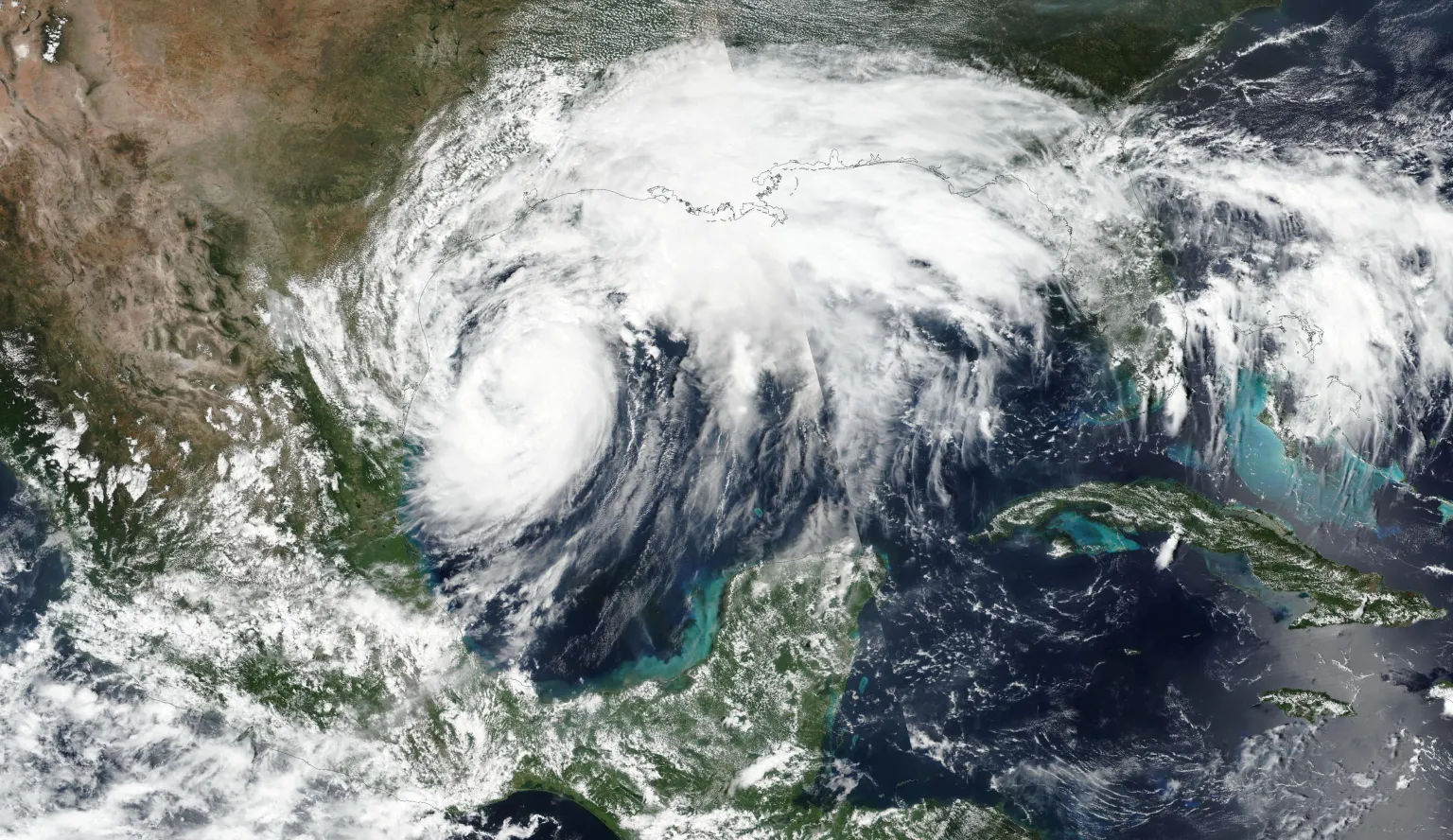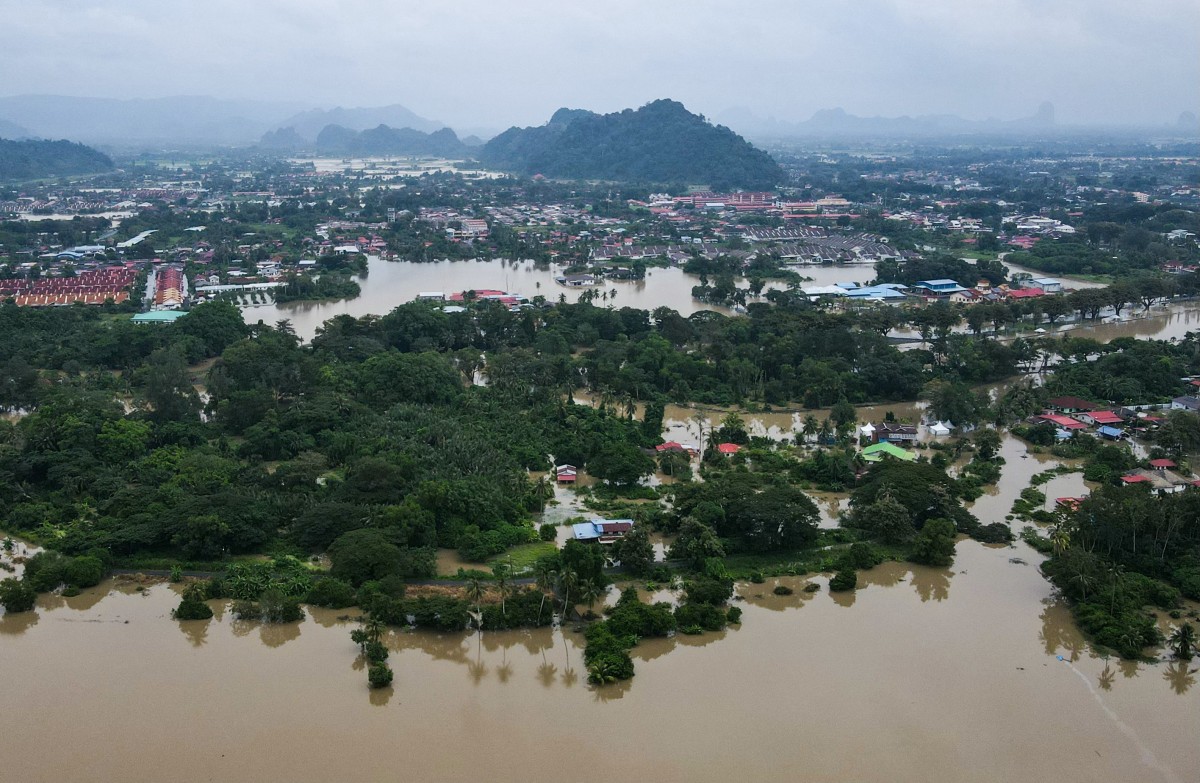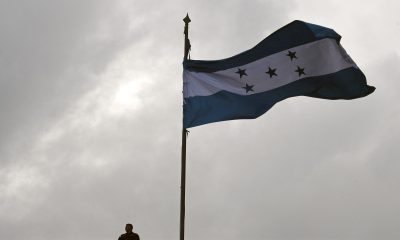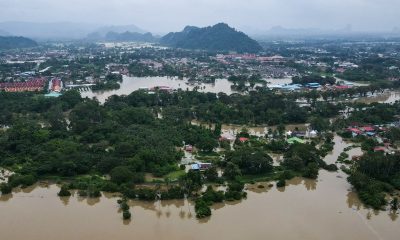International
Hurricane Francine is approaching the coast of Louisiana, in the southern United States, strengthened

A little strengthened Hurricane Francine approaches this Wednesday to the coast of Louisiana (USA) with maximum sustained winds of 150 kilometers per hour (90 miles) and threatens with a “dangerous” storm surge to a large coastal area of the southern United States.
According to the National Hurricane Center (NHC), the cyclone, the fourth of the current Atlantic season, was located 315 kilometers (195 miles) southwest of Morgan City (Louisiana) and 420 kilometers (260 miles) east northeast of the mouth of the Rio Grande.
Meteorologists predict that Francine, which is category 1 on the Saffir-Simpson scale, out of a total of 5, will make landfall in Louisiana this afternoon or evening, and then the center of the cyclone is expected to move towards Mississippi.
There are hurricane warnings for the Louisiana coast from Vermilion-Cameron Line to the east of Grand Isle; also for Lakes Maurepas and Lake Pontchartrain, including the New Orleans metropolitan area.
Meteorologists also have Cameron (Louisiana) under threat of storm surge to the border between Mississippi and Alabama, Vermilion Bay and Lake Maurepas and Lake Pontchartrain.
This risk includes Mobile Bay and the border between Mississippi and Alabama to the borders between Alabama and Florida.
Other tropical storm alerts cover the Louisiana coast east of Sabine Pass to Vermilion-Cameron Line, east of Grand Isle (Louisiana) to the border between Alabama and Florida, as well as both lakes and the metropolitan area of New Orleans.
The storm, which formed after a few weeks of calm in the Atlantic basin, moves northeastward at 19 kilometers per hour (12 miles).
The previous cyclonic system was Ernesto, which became a category 2 hurricane and caused serious floods and blackouts in Puerto Rico, as well as havoc in the Bermuda Islands.
There are already four hurricanes that have formed so far this Atlantic season – which began on June 1 and ends on November 30 – along with Beryl, Debby and Ernesto.
Beryl quickly reached the highest category, 5, causing destruction and death in the Caribbean and the United States.
This season of hurricanes in the Atlantic is expected to be one of the most active and intense in decades, with the formation of up to 25 storms and 13 hurricanes.
International
Chile enters runoff campaign with Kast leading and Jara seeking a last-minute comeback

Chile’s presidential runoff campaign for the December 14 election kicked off this Sunday, with far-right candidate José Antonio Kast entering the race as the clear favorite in the polls, while left-wing contender Jeannette Jara faces an uphill scenario, hoping for a comeback that some experts describe as “a miracle.”
The final polls released in Chile—published before the mandatory blackout on survey dissemination—give Kast, an ultraconservative former lawmaker running for president for the third time, a lead of between 12 and 16 points. His opponent, the communist former minister in Gabriel Boric’s current administration, is weighed down not only by the government’s low approval ratings but also by a fragmented electorate.
Although Jeannette Jara received the most votes in the first round with 26.9%, her lack of alliances beyond the left makes it difficult for her to expand her support. Kast, who secured 23.9%, has already brought key figures on board: ultralibertarian Johannes Kaiser (13.9%) and traditional right-wing leader Evelyn Matthei (12.4%), both now backing his candidacy.
Analysts note that although Kast’s support base consolidates more than 50% of the electorate, it does not guarantee an automatic transfer of votes. Populist economist Franco Parisi, who placed third with 19.7%, emerges as the major wildcard. His party, the People’s Party (PDG), is set to decide this Sunday through an internal consultation whether to endorse one of the two finalists.
International
Trump says asylum decision freeze will remain in place “for a long time”

U.S. President Donald Trump warned on Sunday that the suspension of decisions on asylum applications—implemented as part of his order to “halt” immigration from third-world countries following Wednesday’s shooting in Washington—will remain in effect “for a long time.”
The president declined to specify how long the freeze, imposed last Friday by the U.S. Citizenship and Immigration Services (USCIS), would last. The suspension affects individuals waiting for an asylum ruling from that agency, though it does not apply to cases handled by U.S. immigration courts.
The delay is part of a series of measures enacted by the Trump Administration after a shooting on Wednesday in which an Afghan national allegedly opened fire on the National Guard in Washington, D.C., killing one officer and leaving another in critical condition.
Trump has ordered a permanent halt to immigration from 19 countries classified as “third-world.” He also indicated on Sunday that “possibly” more nations could be added to the list.
“These are countries with high crime rates. They are countries that do not function well… that are not known for success, and frankly, we don’t need people from those places coming into our country and telling us what to do,” Trump said, adding: “We don’t want those people.”
USCIS had already announced on Thursday a “rigorous review” of green cards held by migrants from 19 “countries of concern,” including Afghanistan, Cuba, Venezuela, and Haiti.
International
Sri Lanka and Indonesia deploy military as deadly asian floods kill over 1,000

Sri Lanka and Indonesia deployed military personnel on Monday to assist victims of the devastating floods that have killed more than a thousand people across Asia in recent days.
A series of weather events last week triggered prolonged torrential rains across Sri Lanka, parts of Indonesia’s Sumatra island, southern Thailand, and northern Malaysia. Indonesian President Prabowo Subianto said Monday in North Sumatra that “the priority now is to deliver the necessary aid as quickly as possible.”
“There are several isolated villages that, with God’s help, we will be able to reach,” he added. Subianto also stated that the government had deployed helicopters and aircraft to support relief operations.
Floods and landslides have claimed 502 lives in Indonesia, with a similar number still missing.
This marks the highest death toll from a natural disaster in Indonesia since 2018, when an earthquake and subsequent tsunami killed more than 2,000 people.
The government has sent three military ships carrying aid and two hospital vessels to the hardest-hit regions, where many roads remain impassable.
In the village of Sungai Nyalo, located about 100 kilometers from Padang, the capital of West Sumatra, floodwaters had receded by Sunday, leaving homes, vehicles, and crops coated in thick mud.
-

 Central America3 days ago
Central America3 days agoTrump Pardons Former Honduran President Hernández and Warns of Aid Cuts Ahead of Election
-

 Central America5 days ago
Central America5 days agoPanama reinforces security with new helicopters and Super Tucano Aircraft purchases
-

 Central America23 hours ago
Central America23 hours agoHonduras Extends Voting by One Hour Amid High Turnout, CNE Announces
-

 Central America2 days ago
Central America2 days agoHonduras’ China–Taiwan Future Hinges on Sunday’s Presidential Election
-

 Central America5 days ago
Central America5 days agoTrump urges hondurans to back conservative candidate Nasry Asfura in november elections
-

 International5 days ago
International5 days agoArchbishop Wenski criticizes Trump’s deportation policies, calls for stronger push for reform
-

 International10 hours ago
International10 hours agoHong Kong police arrest 13 over deadly high-rise fire that killed 151
-

 Central America5 days ago
Central America5 days agoWashington calls for oversight as Honduras faces allegations of electoral interference
-

 International3 days ago
International3 days agoMeta Says Russia Seeks to Ban WhatsApp for Defending Secure Communication
-

 International10 hours ago
International10 hours agoChile enters runoff campaign with Kast leading and Jara seeking a last-minute comeback
-

 International10 hours ago
International10 hours agoTrump says asylum decision freeze will remain in place “for a long time”
-

 International10 hours ago
International10 hours agoSri Lanka and Indonesia deploy military as deadly asian floods kill over 1,000






























